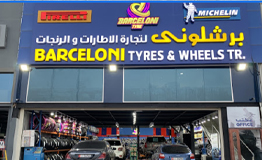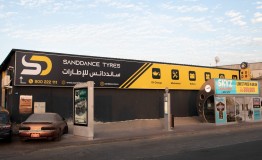As a car owner, you know that your car requires regular maintenance such as tyre and oil changes. But how often do you think about your car’s suspension? Drivers often think that the suspension is a smooth ride, so they often overlook this part of the car during repairs. Suspension is made up of many parts and can affect the maneuverability of the vehicle. Your car suspension basically connects the body of the vehicle to the wheels. It gives the driver the ability to steer and move the car. Suspensions consist of tyres, tyre air, springs, handlebars, struts / shock absorbers and much more. Struts and shock absorbers are different components. They are in separate cars and are not replaceable.
For example, if you have a car made of struts, those broken or worn parts cannot be replaced with shock absorbers. So, what’s the difference?
Differences between shock absorbers and suspension struts Basically, the design of shock absorbers and suspension struts is different. Shock absorbers are designed to prevent vehicle collisions by absorbing the impact that tyres may collide with while driving. Struts are part of the vehicle structure and affect the steering system and vehicle orientation.
After years of supporting three to four tons of metal, your suspension parts will eventually wear out. You`ll need to replace them. But, how do you know the signs of a worn suspension, especially when it comes to shocks and struts?
Signs of a Worn Suspension
Think you have a worn suspension: Signs and symptoms are broken into two categories: bad shocks and bad struts.
Signs of bad struts
If the car knocks every time, you drive a pothole or bump, there may be a problem with the struts. The strut is made up of several parts that wear over time. Noise from the front or rear tyres while driving can be a “bottom out” of the struts. Basically, if the struts don’t work properly, they can cause problems, break, and get stuck on the road.
Ride is bumpier than usual; your struts may be broken or defective and should be replaced. Your trusted Tyre Shop car expert can do road tests to determine exactly what the problem is.
Another obvious sign of shock absorber failure is if the front section is loose or the car appears to rotate sideways. If you’re having trouble keeping steering on the road, it’s definitely time to bring your car Sand Dance Tyre Shop car center.
If the car does not absorb the impact well due to bad braces, you will know that the tyres are worn. A non-uniform impact on a car means a non-uniform mark on the tyre.
Bad Shock Absorber Signs:
Shock absorbers consist of several different parts such as reserve pipes, hydraulic fluids, pistons, pressure cylinders, and valves that regulate the fluid moving from piston to piston in the bumps.
The piston seal or internal valve may be damaged and the liquid in the shock absorber may move unadjusted. When this happens, the shock absorber will not function properly. In other words, you will feel all the small bumps and dips on the road. The noticeable vibration of the steering wheel indicates that you need to contact an expert Tyre Shop and Car Repair Service.
Avoidant braking and cornering are another sign that there is a problem with the liquid in the shock absorber. If the liquid is not adjusted, it will put a heavy load on one side of the car during the turn, causing it to overcorrect the turn. The Texas Department of Transportation reported that there were 1,204 accidents in 2019 when drivers suddenly turned too far.
If there is a noticeable leak, it indicates that the seal connecting the shaft to the damper housing may be cracked. The escaping liquid flows over the damper to the floor. If the damper leaks, it’s only a matter of time before it needs to be replaced.
A worn shock absorber can cause a car to slip and slip across the road. Tyres always make uniform contact with the ground and do not wear unevenly. This can be dangerous for many reasons, including tyre traction.
Their suspension system works hard to keep the ride comfortable by smoothing the bumps on the road and placing the wheels on the ground as much as possible to provide traction. But how can you tell if there is a problem with the suspension?
The general signs of suspension problems are:
Unilateral Towing While Driving
If you notice your vehicle pulling to one side or the other while driving, there is a problem with the tyres, shock absorbers, or brakes. Tyres (camber, roller, toe, etc.) must be properly adjusted for a smooth ride. Make sure the tyre tread is worn evenly and that the tyres are properly inflated as too much or too little can affect stability while riding. Please check. If checking the tyres do not solve the problem, check the suspension system. Are the shock absorbers, ball joints or wishbones showing signs of wear or damage? If you are not sure what to look for, we recommend that you contact a qualified Tyre Shop mechanic as suspension problems can seriously affect your safety.
Feel every bump One of the main functions of the suspension is to smooth out the bumps on the road. If you feel bumps on the road surface, this clearly indicates a malfunction of the shock absorber or strut and should be checked. A simple test is the pump-down test. All you have to do is press your entire body weight against the hood of the car. Release your hand and count how many times the car jumps. If it bounces more than 3 times, the shock absorber or stance is a problem. Alternative tests depend on whether the vehicle has shock absorbers or struts. If your car has a shock absorber, look for a fluid leak that cushions the impact. Also, if your vehicle has struts, be careful of knocking when overcoming a crash.
Deep Corners
If your car’s corners look much lower than other corners, your springs may be worn or broken. You may also hear a rattling sound when going through bumps or deep holes. To check this, first make sure the tyres are inflated correctly and evenly. If the corners are still sagging, put all your weight in the trunk of the car and listen to how the suspension reacts. A squeak indicates that you need a Tyre Shop mechanic to check the suspension.
Diving, Rolling, and / or Crouching
Does your car dive:
Ø Does the nose tilt forward (that is, lean forward) when braking?
Ø If there is a curve, will it roll sideways (that is, tilt left or right)?
Ø Rear squat during acceleration (i.e., lean backward)?
If you answer “yes” to any of these questions, you may have a problem with your shock absorber or strut. This can easily be confirmed with a bounce test. If you have problems with your shock absorbers or struts, it is dangerous to drive with the shock absorbers or struts worn or broken, so it is advisable to as soon as possible take your car to the Tyre Shop or Car Mechanic.
Difficulty of driving
There may be a problem with the suspension or steering system, especially if steering is difficult at low speeds. It can be a low power steering fluid, a defective power steering pump, a leaking power steering rack, or a worn wishbone bushing.
Due to the danger of driving, it is recommended to have a mechanic check as soon as possible if the steering does not work properly.
Oil Shock Absorber
Experts recommend regular visual inspection of the suspension system. If the shock absorber or struts are greasy or appear greasy, fluid may leak. This means that it doesn’t work best when needed, so it’s a good idea to have it checked by a mechanic. The car’s suspension consists of springs and shock absorbers to protect the car from the uneven movement of the four wheels against the road surface. Sudden impacts to road bumps and other obstacles can damage this system. Over time, these shock absorbers wear out and shorten the life of the vehicle’s suspension components. says seasoned drivers know pits and bumpy roads as a part of life. Often large holes in the road ahead are unavoidable because avoiding them can be dangerous. When the car hits hard, the body trembles. Over time, these bumps can cause suspension and adjustment problems. If the irregularities are large enough, the vehicle may be damaged. This means that the floor of the car can hit the road.
Suspension refers to all parts that connect the vehicle to the road, such as tyres, axles, and shock absorbers. Vehicles may have different suspensions, but all are designed to perform three functions.
Vehicle turns in response to bumps and other bumps supporting the vehicle. Damage to the vehicle’s suspension can be dangerous. This affects the steering and reduces the vehicle’s performance. Replace shock absorbers or suspension struts to restore vehicle stability and control. Braking performance is also improved.
Tags: Tyre Shop, Tyre Shop Near Me, Tyres in Dubai, Car suspension repair, best car repair Shop, best Car garage in UAE.





Sand Dance Tyres is fast becoming an established name in the UAE for tyres, general maintenance repairs and quick lube changes. We are rapidly expanding across the UAE so there is always a store near you.
SAND DANCE TYRES TR. – Copyrights 2024 – All Rights Reserved. Design & Developed by ICT Information Systems LLC